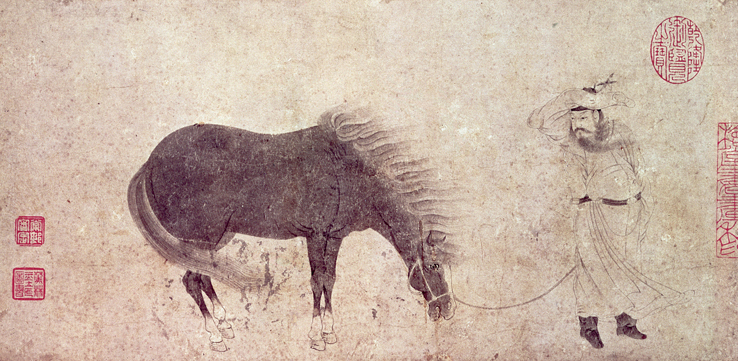A History of World Societies:
Printed Page 344
A History of World Societies Value
Edition: Printed Page 342
The Spread of Disease, Goods, and Ideas
The rapid transfer of people and goods across Central Asia spread more than ideas and inventions. It also spread diseases, the most deadly of which was the plague known in Europe as the Black Death, which scholars identify today as the bubonic plague. In the early fourteenth century, transmitted by rats and fleas, the plague began to spread from Central Asia into West Asia, the Mediterranean, and western Europe. When the Mongols were assaulting the city of Kaffa in the Crimea in 1346, they were infected by the plague and had to withdraw. In retaliation, they purposely spread the disease to their enemy by catapulting the bodies of victims into the city of Kaffa. Soon the disease was carried from port to port throughout the Mediterranean by ship. The confusion of the mid-
Traditionally, the historians of each of the countries conquered by the Mongols portrayed them as a scourge. Russian historians, for instance, saw this as a period of bondage that set Russia back and cut it off from western Europe. Among contemporary Western historians, it is now more common to celebrate the genius of the Mongol military machine and treat the spread of ideas and inventions as an obvious good, probably because we see global communication as a good in our own world. There is no reason to assume, however, that people benefited equally from the improved communications and the new political institutions of the Mongol era. Merchants involved in long-
The places that were ruled by Mongol governments for a century or more — China, Central Asia, Persia, and Russia — do not seem to have advanced at a more rapid rate during that century than they did in earlier centuries, either economically or culturally. By Chinese standards, Mongol imposition of hereditary status distinctions was a step backward from a much more mobile and open society, and placing Persians, Arabs, or Tibetans over Chinese did not arouse interest in foreign cultures. Many more styles of foreign music, clothing, art, and furnishings were integrated into Chinese civilization in Tang times than in Mongol times.

In terms of the spread of technological and scientific ideas, Europe seems to have been by far the main beneficiary of increased communication, largely because in 1200 it lagged farther behind than the other areas. Chinese inventions such as printing, gunpowder, and the compass spread westward. Persian and Indian expertise in astronomy and mathematics also spread. In terms of the spread of religions, Islam probably gained the most. It came to dominate in Chinese Central Asia, which had previously been Buddhist.